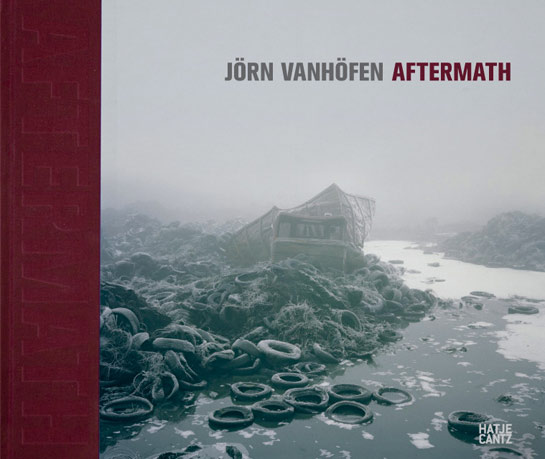Review: Aftermath by Jörn Vanhöfen

I’m sometimes glad that I don’t have to make certain decisions. Jörn Vanhöfen’s Aftermath is a good example: Which image to put on the cover? Deciding about the cover image is always tricky, but I think it’s especially tricky in this case. The title is Aftermath, there are piles of old tires and a broken down truck on the cover - it’s gotta be, well, “ruin porn,” right? Wrong. (more)
We’ve seen photographs of ravaged landscapes before, and we have also seen our fair share of what people sometimes call “ruin porn.” The problem with that kind of work often is the lack of context: What does that work really say? What does it mean? What is the artist trying to tell us? Why do we need to look at it? You’re unlikely to have those kinds of questions when looking at this book. Unlike a lot of other work, Aftermath is not afraid to make connections. For example, a photograph of the Chicago stock market is sandwiched by photographs of piles of materials on recycling yards. There are connections made between what was, what is, and what could be.
I’m reminded of a line from an Einstürzende Neubauten song: Singing about the building boom in the newly reunified Berlin, it’s “Alles nur künftige Ruinen” - “Everything merely future ruins.” The ruins - those are the flip side of shiny new buildings being erected somewhere else. The trash in recycling yards - that’s what’s left over from our incessant consumption. That is what Aftermath does: It connects dots that you usually don’t see connected. So the title, Aftermath, is almost a bit deceiving, because things happen at the same time. Or, as in the Neubauten line, the shiny new stuff will be the ruins and junk of the future.
Of course, you can either agree with such a connection, or you can disagree. But I can’t escape the feeling that making these connections at least gives you something to work with. You’re not merely looking at photographs of ravaged landscapes or at photographs of the ruins of Detroit, you’re also looking at a shiny new bridge spanning some lush valley, or even a photograph of a cityscape that contains both new buildings decay of the old at the same time. Essentially, the photography does not deal so much with what each individual image shows. Instead it deals with the things we do to create the circumstances that allow this particular photographer to go and take these images. I often feel that this bigger picture gets lost (or outright ignored) in many contemporary projects about piles of junk, ravaged landscapes, new developments, or whatever it might be.
I’d almost go so far and say that it’s rather refreshing to see so many seemingly disconnected things being put together, but of course, it isn’t: It’s revolting to see. Or maybe it’s exciting to see. Who knows? Someone might bemoan that which is lost, someone else might celebrate a great business opportunity. Aftermath leaves no doubt where the photographer and his essayist stand. No doubt. That I also find very refreshing.
Aftermath, photography by Jörn Vanhöfen, essay by Hans Christoph Buch, 148 pages, Hatje Cantz, 2011